According to Statista, 8% of 18– to 29-year-olds are in a committed relationship with a partner or spouse they met online. Using a dating app has become a meaningful and common method for people to find the love of their life. Of course, there are many more people out there using these various apps looking for casual dating, friendship, and other things.
Within this pool of eager singles, you have a plethora of subcategories for different niches and preferences.
Because of this, the dating industry is extremely saturated, with 1,500 apps fighting for the same users: single women and single men. Among the key players, we’ve noticed that the biggest have differentiated themselves largely by using a tool that’s proved powerful in many other industries and niches: native ads.
Today, we analyze three dating apps that have made it big using native ads and other methods:
- Match.com: One of the oldest dating platforms in the internet
- Zoosk: A dating app that is available in more than 25 languages
- OurTime: A dating app concentrating on an older demographic
Match.com
Match.com, founded in 1993, is probably the oldest and biggest company on the list. When the World Wide Web became popular, it was one of the first few sites that helped people hook up.
The site is now under the Match Group, which owns most of the popular dating apps, including Tinder, OKCupid, and Plenty of Fish. The Match Group is forecasting a revenue of up to $1.72 billion this year.
It works on a subscription model and costs $20.99 per month if you choose a 12-month membership.
Ad spend
Match has spent $29.2 million in the last 24 months, almost entirely on mobile ads.
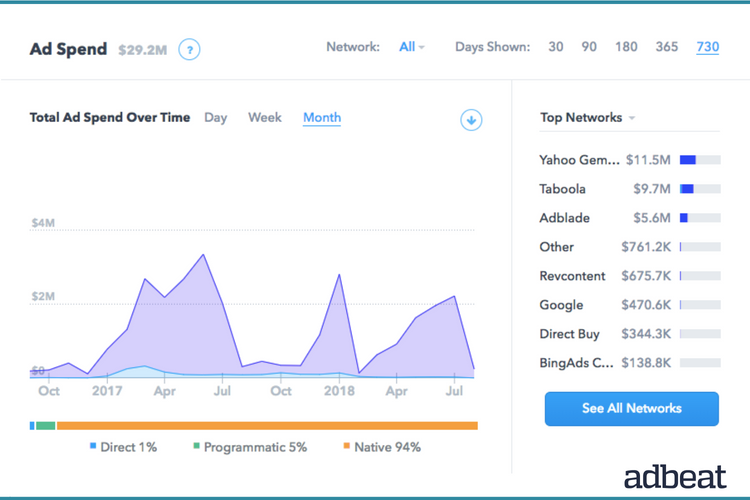
As you can see, 94% of their ads were native ads.
While they did put a lot of money on Taboola ($9.7M) and Adblade ($5.6M) last year, they’ve since put all of their money on Yahoo Gemini ($11.5M):
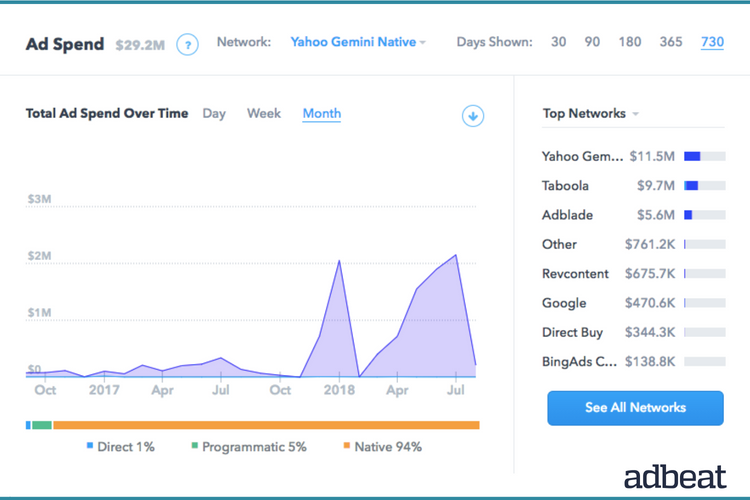
Publishers
Yahoo seems to be Match’s most successful publisher so far. They’ve spent around $11.5 million dollars here:
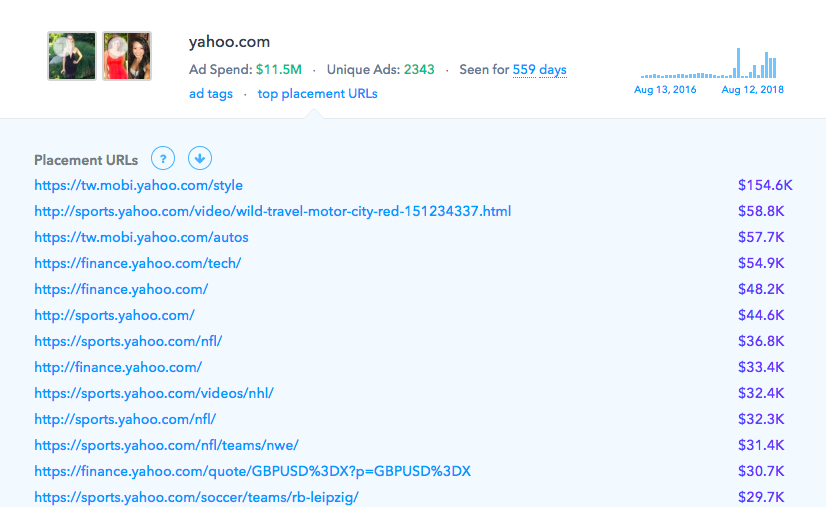
They’ve put more money on topic homepages than on individual posts. For example, the finance, style, automobile, and sports sections have been pumped with a lot of ads. When it comes to individual pages, they’ve targeted sports pages related to soccer and the NFL. These are male-dominated pages, and we all know that men are more into dating sites than women.
Match’s second biggest publisher is Classmates.com, a database site that helps you find your long-lost high school friends and plan reunions.

Many folks using Classmates will be hit with old memories of crushes and “first loves.” Recollection of such youthful experiences can easily make singles open to the idea of hooking up. This is probably the most creative way to target potential leads!
Creatives
They’ve put all of their money on simple image ads. They’ve also flirted a little with HTML5:
 The best part is that their image ads don’t look like ads at all!
The best part is that their image ads don’t look like ads at all!
Here is one example. The ad blends really well with the website and looks more like an extension of it, with the apparent option to choose age:
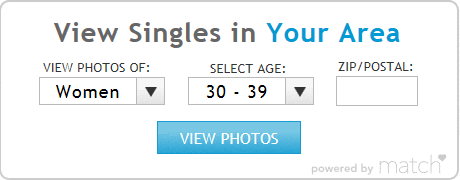
Here is another one, which works similarly. For this ad, they’ve also used the picture of a female model to get more attention:

The CTA for both creatives is “View photos” or “See more pics.”
For native ads, the creatives look like this:  As you can see, the text is targeting a particular locality, in this case, “Ashburn.” This is much better than using the term “your area,” as in the previous creatives.
As you can see, the text is targeting a particular locality, in this case, “Ashburn.” This is much better than using the term “your area,” as in the previous creatives.
Landing Page
Match’s landing page is their website itself, with the profiles of singles listed on it. This the best way to get people to use their service. It doesn’t even feel like a landing page:

Each profile acts like a CTA. When you click on a person, it takes you to the sign-up page:
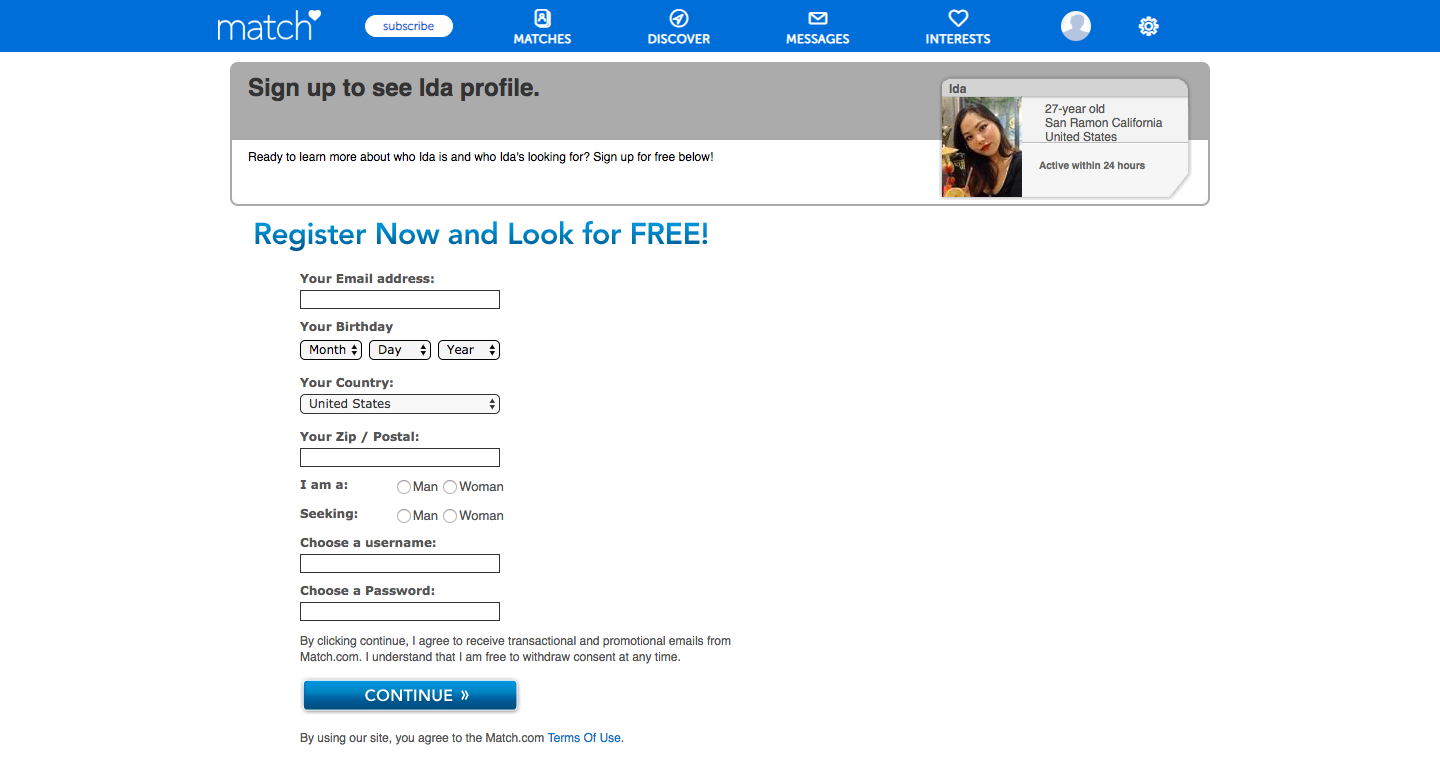
The header says “Register Now and Look for Free!” For a single guy who’s just seen an attractive woman, this is probably the best CTA you can use at the top of a lengthy form. There’s even a screenshot of the profile on the side to keep the leads motivated!
Zoosk
Zoosk was founded in 2007 and has a presence in over 80 countries in over 25 languages. They have a user base exceeding 40,000,000 users. According to Wikipedia, they had an estimated revenue of around $178 million in 2013.
Though their service had no monetization strategy in the beginning, after a tough year in 2014, they introduced a premium fee to message someone more than once. It costs $12.49 per month if you get on a 6-month membership.
Ad spend
Zoosk has spent over $1.4 million in the past 24 months.

They’ve tried out Google Networks ($625.9K), Direct Buys ($175.9K), and also native ads via Yahoo Gemini ($437.8K). Their constant reliance is on Google Networks.
The sudden rise of spend in January 2018 reflects their trying out Yahoo Gemini: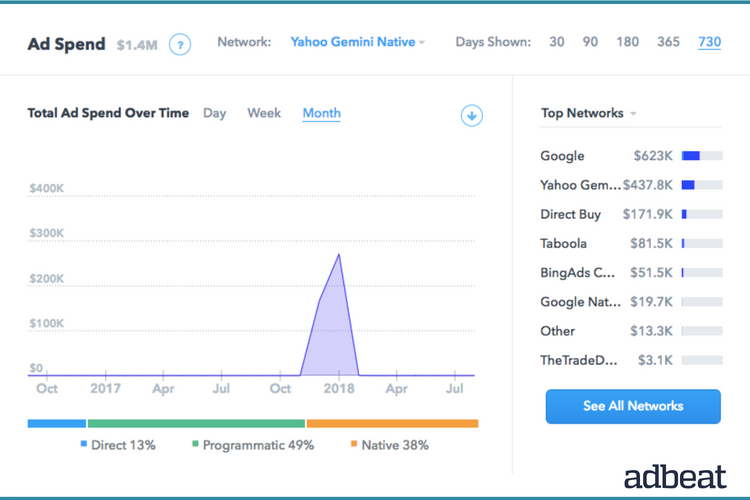
But because they’ve not continued with Gemini, we can assume it was a failed experiment. They’ve also toned down Direct Buys after a few initial experiments.
In total, they’ve concentrated 13% on direct buys, 49% on programmatic ads, and 38% on native ads.
Publishers
Just like Match.com, Yahoo is Zoosk’s top publisher, where they spent most of the money. But it was all spent on one go in January 2018.
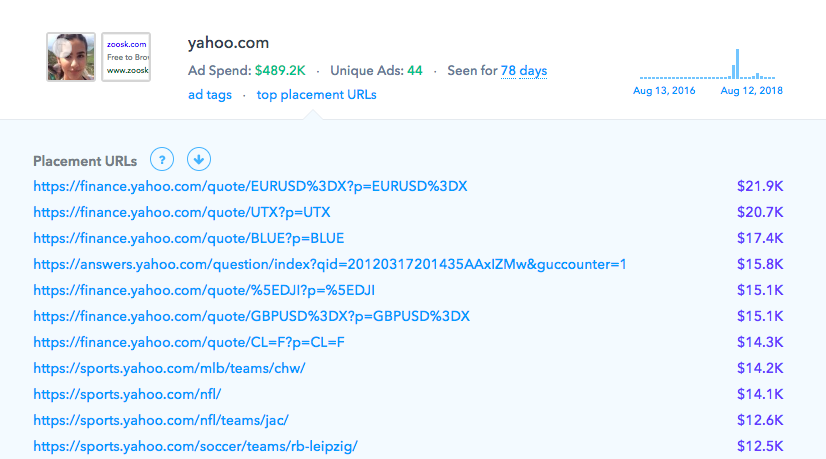
They’ve mainly concentrated on individual pages inside finance and sports sections instead of going for the main hub page or homepage. This could be the reason they didn’t get much ROI.
They’ve run a lot of ads on Mingle2.com, which is a free dating website that relies on ads for monetization.

With the quality of this website being low, users will look for a better experience. Running ads here is super contextual because people are here with the intention of finding a partner. This was a direct-buy ad. However, they’ve reduced spending here for some time now. This could be after finding better channels with higher ROI.
Zoosk has also tried out Dailymotion and American Military News in an attempt to get the attention of male users.

But Zoosk stopped spending on these publishers after an experiment or two.
Creatives
Though they tried out both image ads and text ads in the beginning, recently they’ve been trying mostly image ads.

This is their most-used ad:

At the top, they’ve mentioned “Online now” and “4 miles away” to induce FOMO. Moreover, the cross and tick symbol is a well-known reference to dating apps. The CTA “Find your next date” coupled with a CTA button, “Browse Singles,” is good enough to get clicks from singles.
They’ve also used GIFs to portray how it would look inside their app: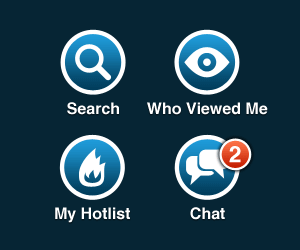
Notifications in the “Chat” icon are sure to ring a bell with many people!
This is their most-used native ad creative:

One of the biggest problems most dating apps have is the lack of female representation. This is a great effort by Zoosk to attract women above the age of 40. So what happens when you click on this creative? More on that in the next section!
Landing Pages
For the standard ads, they’ve used their homepage for conversions. There is a simple account-creation form to the right, with options to sign up using Google or Facebook.
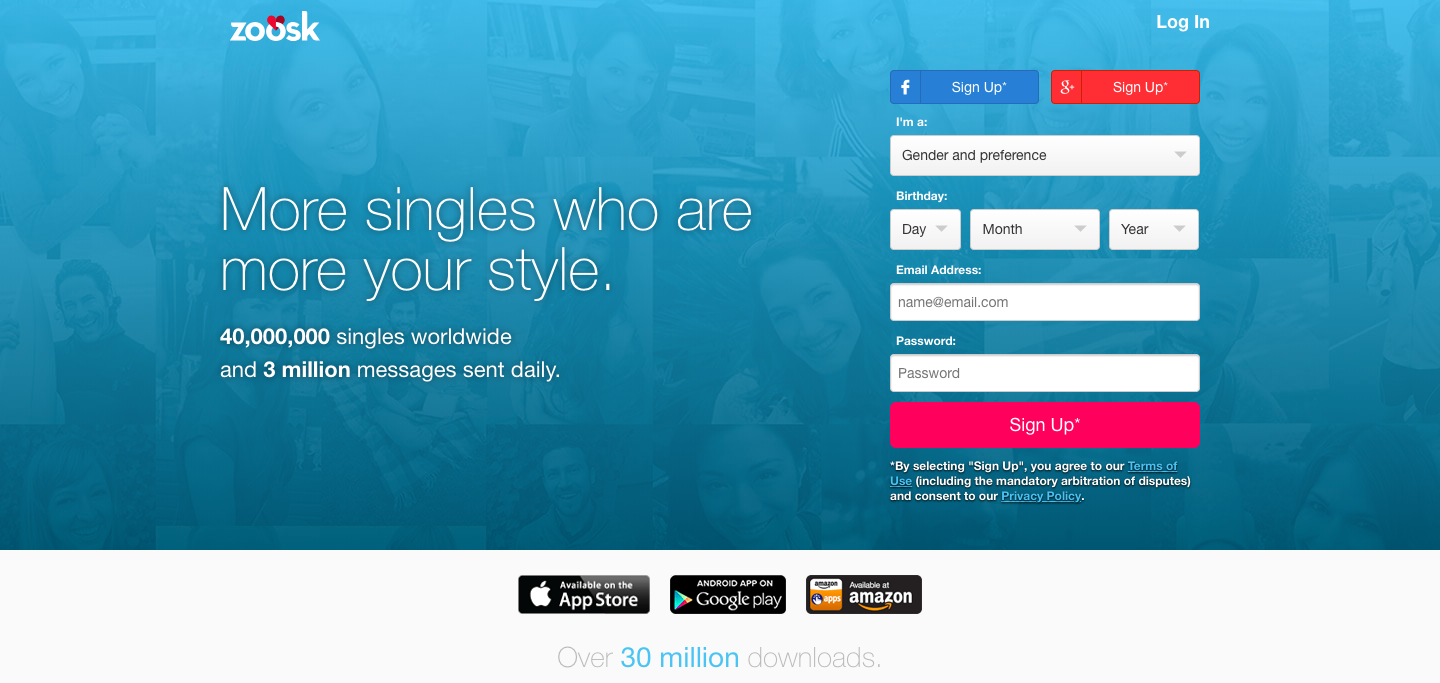
In the copy, they’ve used terms like “40,000,000 singles worldwide,” “3 million messages sent daily,” and “over 30 million downloads” to gain trust.
However, when it comes to native ads, like the image ad shown above in the previous section, the visitors are taken to a blog on the Zoosk website.
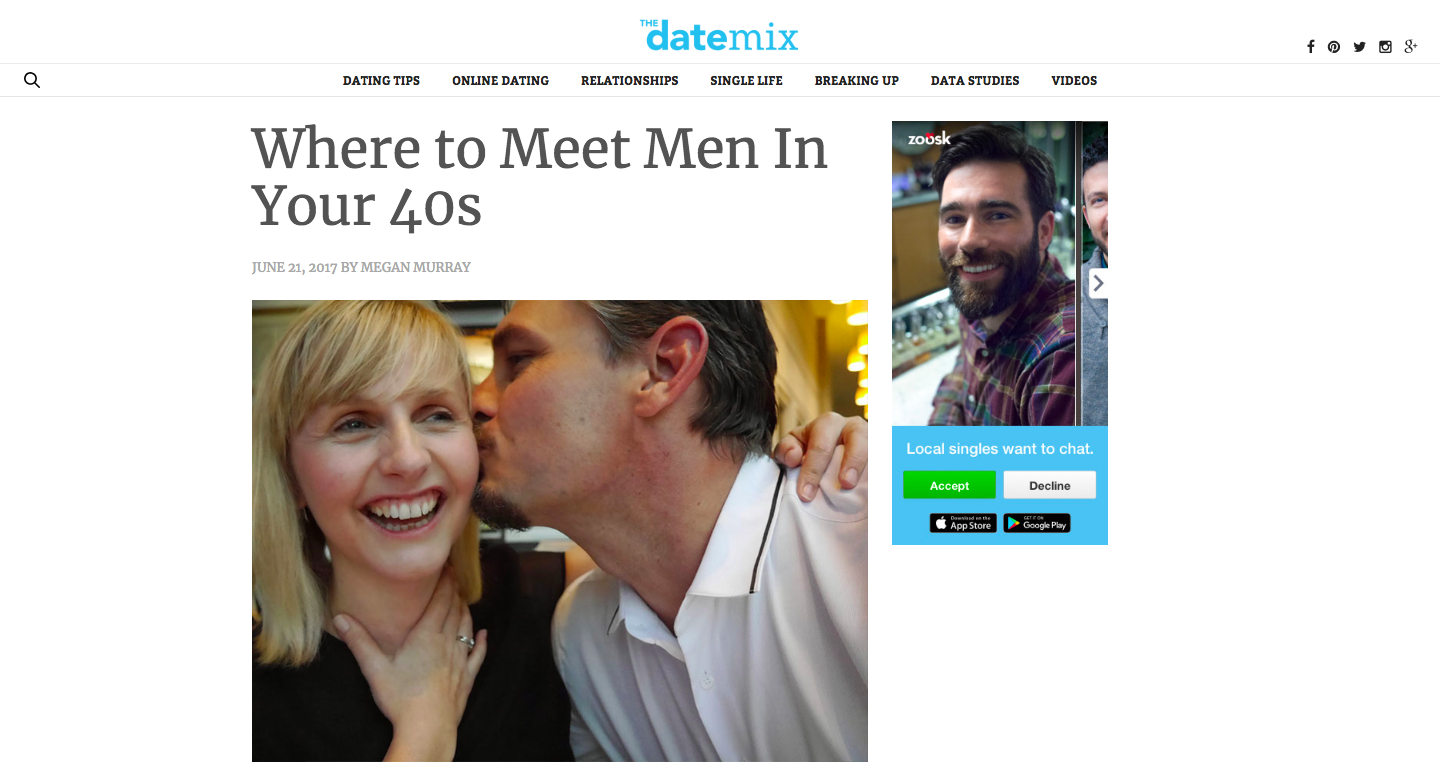
The header is the same as the ad copy: “Where to Meet Men in Your 40s”; the image used is also the same. To the right, there is a display ad that says “local singles want to chat,” with a CTA to “Accept.” Many site visitors will convert here.
The whole blog is like a mini guide to help older women to get back into the dating scene.
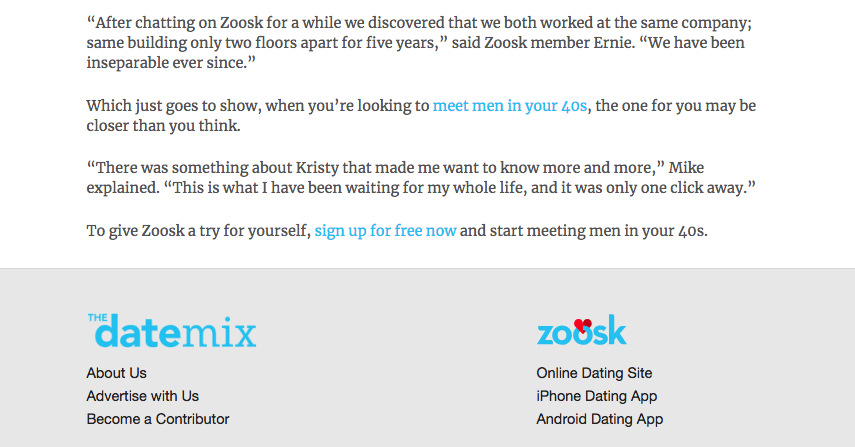
As you can see, it also quotes other Zoosk users who have found success with the app. It ends with a CTA to sign up to Zoosk for free.
OurTime
OurTime, founded in 2011, is the newest platform in this list. They cater to people above the age of 50. They have an estimated annual revenue of $8 million.
OurTime runs on a subscription model, just like Match.com,but it is less expensive at just $11.99 per month for a 6-month membership.
Ad spend
OurTime has spent around $3.9 million over the course of 24 months. They’ve not depended on ads constantly for gaining leads. It looks like they’ve used ads to mainly boost their sign-ups from time to time.
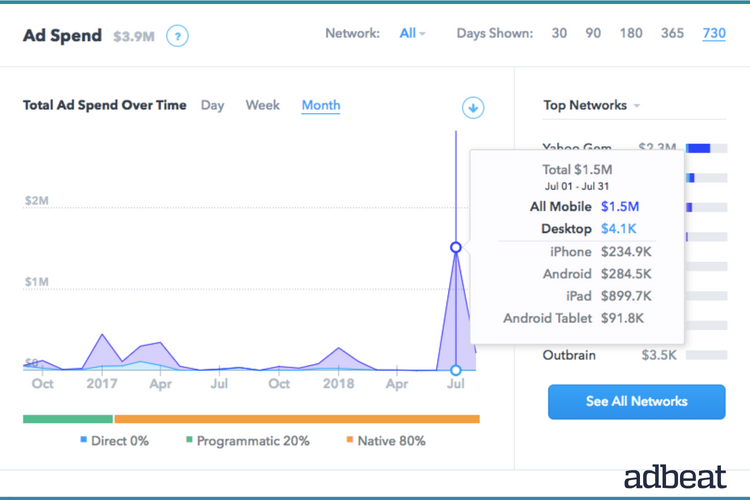
Of all such campaigns, the recent one was their biggest, for which they spent $1.5 million in July 2018 alone. This campaign was run entirely on the Yahoo Gemini network.
Other networks they’ve tried in the past are Taboola ($819.2K) and Google ($578.4K).
Publishers
Like all other websites, OurTime’s primary publisher is Yahoo via the Yahoo Gemini network. Just like the others, they’ve spent money on finance- and sports-related pages.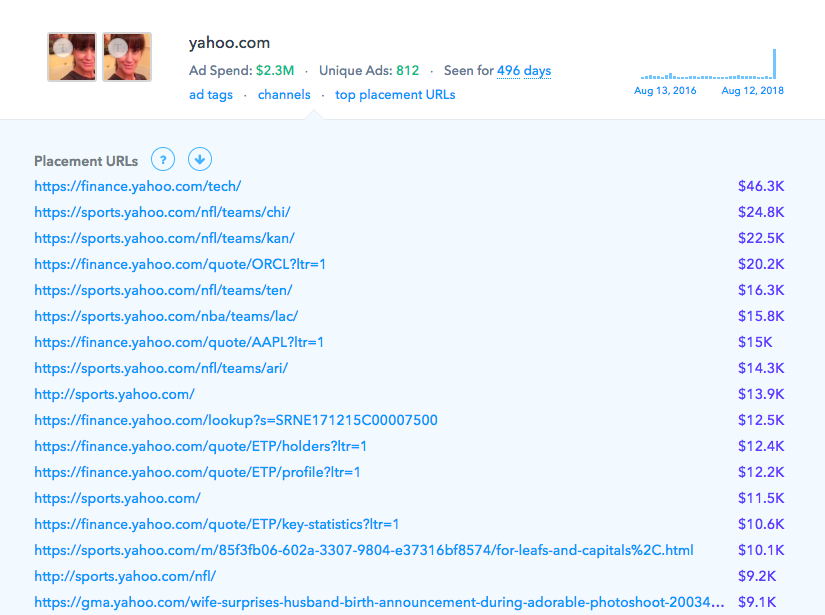
They’ve concentrated on hub pages, just like Match.com, and also on a few individual pages, which are related to romance and marriage.
They’ve used Classmates, just like Match.com, to catch the attention of the “reunion” crowd.

They’ve spent decent money on yourdailydish.com via Taboola.

This is an entertainment website with content that can be addictive. For example, the top pages they’ve targeted talk about hilarious Twitter account renames and funny animal photobombs. In a way, it is the kind of website jobless singles would spend time on.
Creatives
OurTime has spent most of their money on image ads with text. They’ve even tried some image and HTML5 ads.
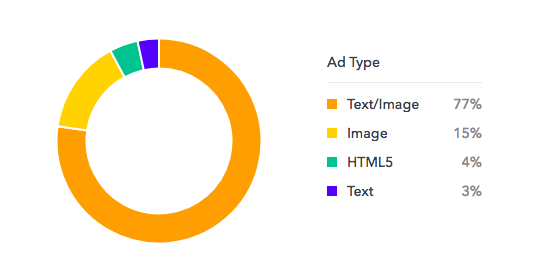
For the recent native ad campaigns, they’ve used an image of a mature woman with some simple text:
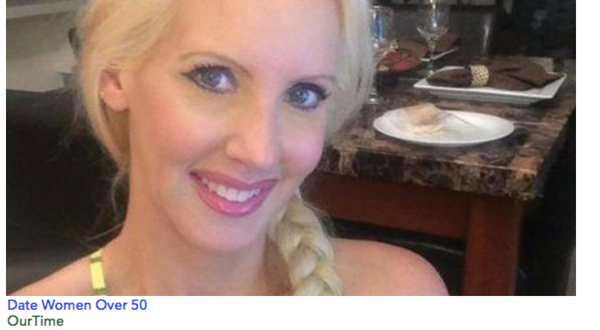
The copy is to the point and describes what their service offers.
The display ads also are similar. It’s just that they’ve used multiple images. Here, they’ve used just “mature woman” instead of specifying any name.

The CTA is similar to what others have used; it’s about seeing more pics of potential dating partners.
Landing Pages
The standard ads take visitors to a landing page. This is what the page looks like initially:
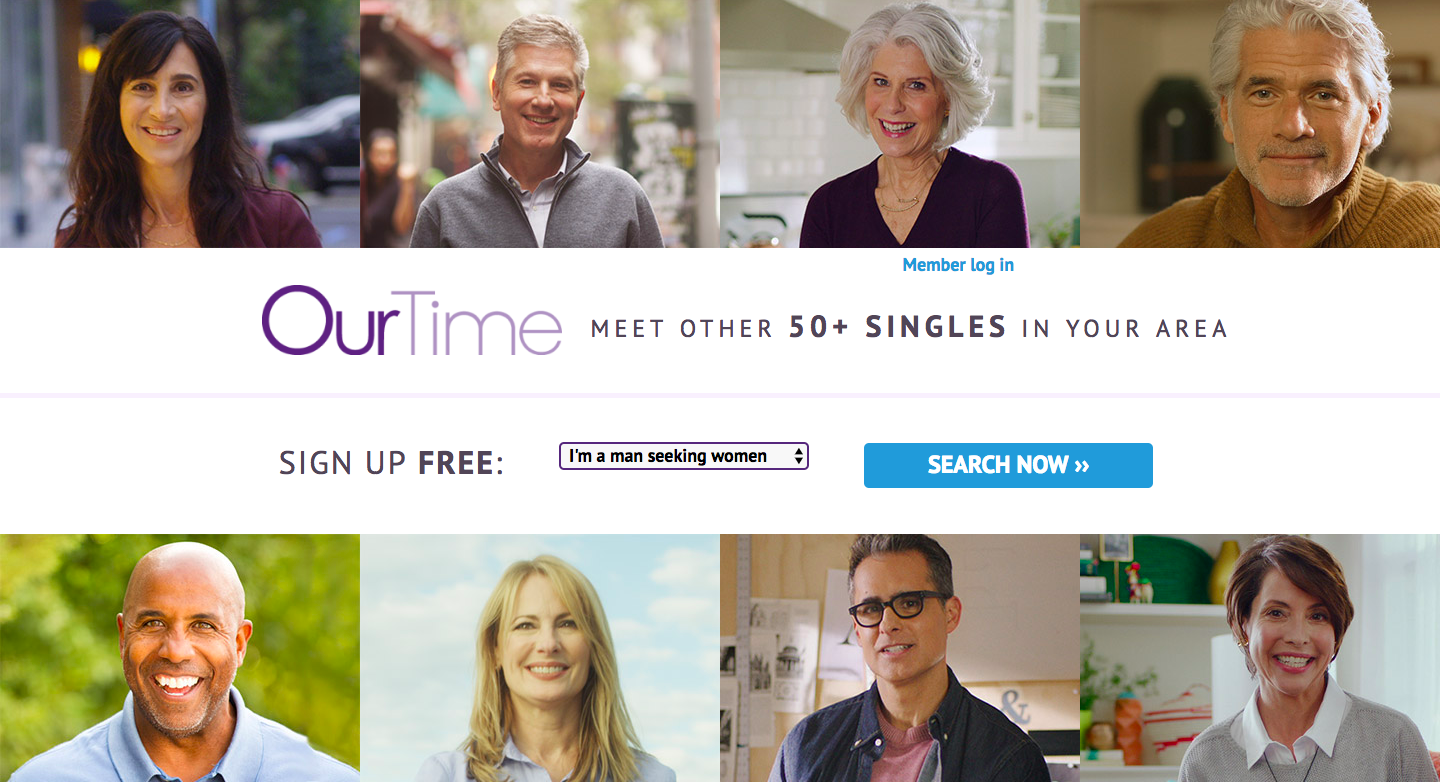
Once people click on “Search Now,” they’re taken to another page, which asks for their country:
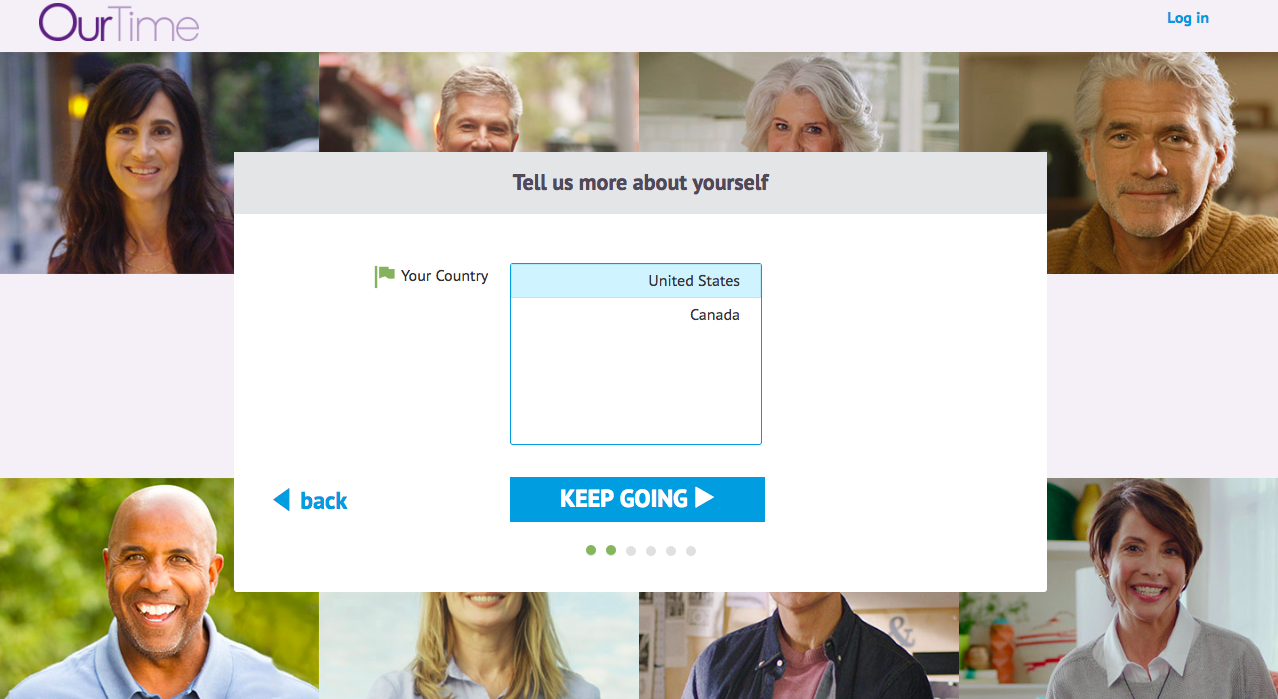
Similarly, it asks for zip code, preferred username, password, birthday, and email address.
It is basically a lead-generation form that shows just one step at a time. This is a great idea to improve conversion, for two reasons:
- By showing just one question at a time, people are not overwhelmed. It doesn’t look like it requires much effort, as opposed to a form that shows everything in one go.
- Once they are invested in it—after answering a couple of questions—people won’t feel like quitting just like that.
Conclusion
When it comes to targeting, choosing Classmates is a very creative approach adopted by both Match.com and OurTime. When choosing your publisher, try to think outside the box like these brands. Running ads on Mingle2.com is a great growth hack by Zoosk. When it comes to context, this strategy is a killer. Try to find sites that are offering your type of service on a freemium model. These websites will probably run ads as their monetization strategy.
When it comes to ad creatives, Match.com stole the show. They just proved that the best ad creatives are ones that don’t even look like ads!
OurTime nailed it with their interactive landing pages. It is a great hack to reduce bounce rates. This works very well, especially if you have a lead-generation form that can seem too long.
Now, what if you could find your competitor’s ad strategy just like we decoded the strategy of these dating apps? Check out our free app now.
Excellent analysis!! Really displays your intelligence tools! We used your tool when I was doing SEO and SEM for a large insurance company but now that I’m working with a legal firm, all our competitors don’t spend a lot in display and we only dabble. Ad Beat is amazing for industries that spend a lot on display.